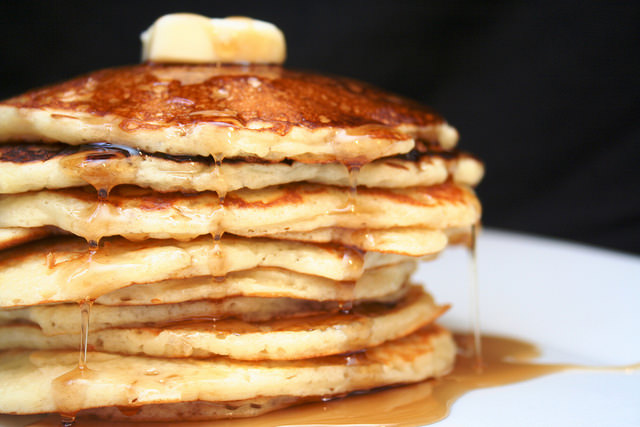Just over five years ago, I felt like a slave to the food around me.
If I felt upset, a heaped plate of rice soothed me.
Bored? Waffles and a double scoop of ice-cream kept me entertained.
Restless at 11pm? A big, comforting bowl of pasta carbonara did the trick.
I ate my emotions every chance I got.
The more I ate, the more food I wanted, and the more anxious I got. There was another problem: As my appetite skyrocketed, so did my waistline.
At my heaviest, I was wearing nothing but sweat pants and baggy t-shirts, because nothing I owned could be zipped or buttoned up anymore. This was also when a close friend gently asked me: “Meesh, have you let yourself go?”
We both knew the answer to her question, and in that moment, I knew that things had to change. Crash or restrictive dieting wasn’t a road I wanted to go down because I didn’t want to cut the foods I loved out of my life.
What I really wanted to do more than anything was to change my relationship with food.
So here’s what I did:
1. I slowed my meals down.
Way down. A typical meal usually involved me eating really, really quickly, followed by plenty of guilt, which was then replaced by disappointment and finally, anger.
How did I empty the entire cookie jar in five minutes flat? I could never remember.
This is why I decided to slow way down, smell my food, taste it and actually savor it.
Once I started devoting 30 minutes to eating and taking my time to enjoy the process, an amazing thing started to happen: I was able to feel more satisfied with less food.
2. “Stop eating when you’re no longer hungry” became my new meal-time mantra.
Tired of eating until I was stuffed and bloated daily, and terrified of what it was doing to me, I started paying more attention to how my body felt during my meals, and stopped eating when I was 80 percent full.
This way of eating, called hara hachi bu, is a way of life in Okinawa, Japan. When translated, it literally means “belly 80 percent full,” and not surprisingly, Okinawans are leaner and live longer than most other populations in the world.
Eating this way didn’t just help me learn how to recognize my body’s natural hunger and fullness cues—it’s also what allowed me to lose my excess weight without having to count calories or weigh my food.
3. Eating became a sacred ritual, not an automatic coping mechanism.
Once I started slowing down my meals and as a result, allowed myself to enjoy them more, a realization hit me: By stuffing my face as quickly as I could, I wasn’t just disrespecting my body and the food I had in front of me; I was also cheapening the act of nourishing myself.
Health experts are now recognizing how important getting enough good quality sleep is for our health and longevity— why aren’t we paying just as much attention to how we feed our bodies?
The more we treat our meal times as a sacred, meditative ritual that gives us the opportunity to re-group and de-compress, the more likely we’ll be to eat in a way that reflects our outlook: With love, thoughtfulness and mindfulness.
4. I eat foods I love, every single day.
Another reason why I refused to go on a diet? I didn’t want to eat what someone else decided I should eat.
Of course, this was no license to go crazy with the waffles and fried chicken (been there, done that, it didn’t work out), but as someone who derives so much joy and pleasure from eating, cutting certain foods out of my life was out of the question.
I just wanted to eat like a normal person, so that’s what I worked on achieving—normalizing my eating habits, bit by bit, day by day, so that I could put anything I wanted on my plate without going overboard or feeling unbalanced or guilty.
The result: Freedom. Food freedom. And a leaner, happier me.
~
Relephant read:
Mindful Eating for Weight Loss & Stress Reduction.
~
Author: Michele Lian
Apprentice Editor: Sara Kärpänen / Editor: Travis May
Image: Michael Stern, Flickr











Read 3 comments and reply